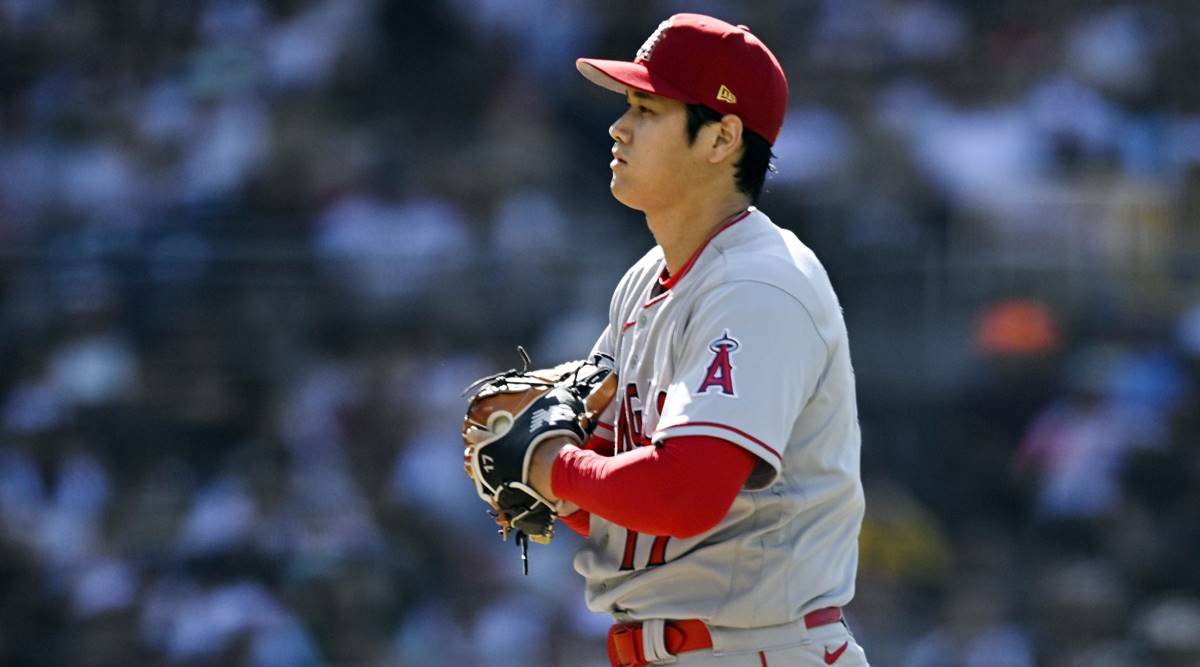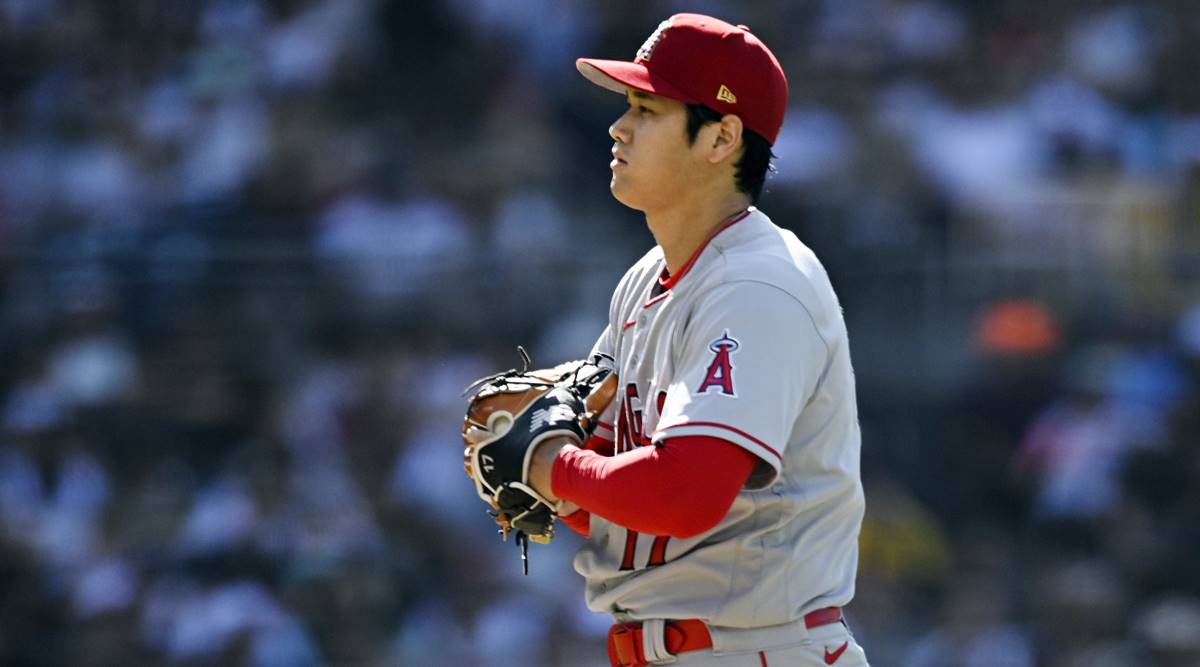After Babe Ruth, the Japanese Shohei Ohtani becomes baseball’s first two-way player in 100 years
George Herman aka Babe Ruth was proficient in pitching and hitting for two glorious years; now a Japanese Ohtani can hit a ball with his bat over 150m and then pitch a ball at 160 kmph.
 Shohei Ohtani delivers during a baseball game. (AP)
Shohei Ohtani delivers during a baseball game. (AP) Recently, the United States of America and Japan met in the final of the World Baseball Classic Final. Japan narrowly edged out the USA and signalled yet another time that the Japanese – a baseball-mad nation by its own right, had arrived on the grand stage. And a once-in-a-generation star athlete in Shohei Ohtani led them to the promised land.
 Shohei Ohtani, baseball’s first two-way player in the last 100 years. (AP)
Shohei Ohtani, baseball’s first two-way player in the last 100 years. (AP)
In Major League Baseball the last player to be at an elite level when it came to pitching the ball and hitting the ball was George Herman – or as most know him today – Babe Ruth. In a sport where most players are proficient in only one of those disciplines, Ruth was great at both. But after two years, the man who played for both the Boston Red Sox and the New York Yankees, decided to give up on his pitching to focus on the home runs. But those two seasons where he did it all stood as the gold standard. There have been a couple of failed attempts in baseball to replicate Ruth’s glorious all-round years, but other than that, a two-way player has been as rare as it gets. Until now.
Enter Shohei Ohtani, baseball’s first two-way player in the last 100 years. On a single night, the Japanese baseball player can hit a ball with his bat over 150m and then pitch a ball at 160 kmph. Being both a pitcher and a batter is not uncommon at the lower levels of baseball (high school, college). But once you reach the Major League Baseball circuit, teams often ask players to shut one shop down.
Fighter start
Growing up in the city of Oshu in northern Japan, Ohtani’s father Toru was a baseball player and pushed both his children to take up the sport. Ohtani was only eight years old when he started playing in a weekend little league. On his television, he would watch Hideki Matsui, a left-handed hitter who was known for his powerful drives and try to emulate his game, but never really took the sport seriously. It was only when he was 16 and in high school that the speed gun on his pitches showed that he was throwing balls in the mid-90 mph range. A year later, Ohtani threw a 99-mph ball – a likely occurrence of his height burgeoning to six-foot-five.
At that time, Ohtani was sure that he wanted to skip the Japanese baseball draft and go straight to the United States. He even asked teams in the Nippon Professional Baseball League to not draft him. But then the Nippon-Ham Fighters threw a curveball. They convinced Ohtani that the United States move was something he should wait for – some of their strategies to keep Ohtani in the east included telling him that there weren’t many Japanese women to date in the USA and that as a young player he would have to live in dingy hotels, endure long bus rides and live on a poor pay. But the best pitch they threw to keep Ohtani was the offer that he could pitch and bat for the Fighters.
Switch from Japan to USA
Ohtani agreed and within months of playing for the Fighters, he began to evolve. “He’d smoothed out his mechanics; he was repeating his delivery; he’d developed his breaking ball; his lower half was a lot stronger; he carried himself much better on the mound. It was like he had matured two years in 10 months,” said a scout who had been following Ohtani from his high school days, to Sportsnet.ca. He ended up staying with the Fighters till 2018 and then made the switch to Major League Baseball in the USA with the Los Angeles Angels.
 Los Angeles Angels starting pitcher Shohei Ohtani (17) stands on the mound during the third inning of a baseball game. (AP Photo)
Los Angeles Angels starting pitcher Shohei Ohtani (17) stands on the mound during the third inning of a baseball game. (AP Photo)
It’s at the Angels where Ohtani’s full spectrum of skills was allowed to develop and flourish. Gone were the restrictions that the Fighters had kept to keep him healthy in Japan. With the Angels, he had the freedom to play however he wanted and the lack of restrictions resulted in him winning the 2018 Rookie of the Year award. Then came a year of injury troubles followed by the pandemic which curtailed his rise.
But that period of trouble was followed by a historic 2021 season. Such was his prowess on both ends of the game, that he made it to the All-MLB Team in 2021 both as a designated hitter and a starting pitcher. The season saw him hit 46 home runs and make 156 strikeouts. To put it into context, the Babe Ruth 1919 season, considered by many to be the greatest individual season in baseball saw the legend hit 29 home runs and record 30 strikeouts.
Now in 2023, Ohtani is in the final year of his contract. The MLB pays its top players hundreds of millions of dollars over many years and Ohtani’s current market valuations make it seem like a 600-million-dollar contract for anywhere between eight to ten years, is a given for him. It will join him with the likes of his teammate Mike Trout, a three-time MVP, who has a 12-year, $426.5 million contract. Both players combined have a likely value of around 1 billion dollars.
As teammates they don’t get to play apart, but the dream match materialised at the World Baseball Classic Final. For two months, Trout had faced a barrage of questions – ranging from whether this moment would ever play out, and what it would mean to him, and whether it would be a consequential play. All of those glimpses of hope welded themselves together into the perfect moment.
In the bottom of the ninth inning, with two USA hitters back in the dugout, Trout walked to the plate with his bat in hand. His country was down a run and this was the last chance he would get to even proceedings and keep the USA in the match. And on the mound was Ohtani, ready to pitch to him.
The first ball was an 88mph slider, moving just outside the strike zone — Ball. The second was a rasping 100mph fastball that swung and so did Trout – miss! Ohtani had his first strike. His third pitch was another fastball – the speedometer blinked at 99.8mph but the ball drifted out of the strike zone. The fourth pitch was dead centre and fast. Trout swung again and missed – and then followed it up with looking at the camera, chewing his gum faster and grimacing. Ohtani then attempted another fastball but lost his grip and threw the ball into the ground. Three balls and two strikes – another ball and Trout would walk to first base; another strike and Trout would walk away from the game empty handed.
This is what it had come down to. Even in the most perfect of scenarios with two of the best baseball players in the world, one pitch and one hit would decide it all. Everyone thought Ohtani would go for the obvious fastball – that 100mph missile that he chucks effortlessly. Trout even took a step back to gather his breath – this was the most high-pressure situation a batter could find himself in. What did Ohtani do? He launched his arm and threw a slider that swung to Trout’s left. It wasn’t the swing though, but the speed – 87mph. Ohtani sold his three-time MVP teammate a dummy when all of baseball was watching. Trout didn’t have a chance. The Japanese had done it.
































